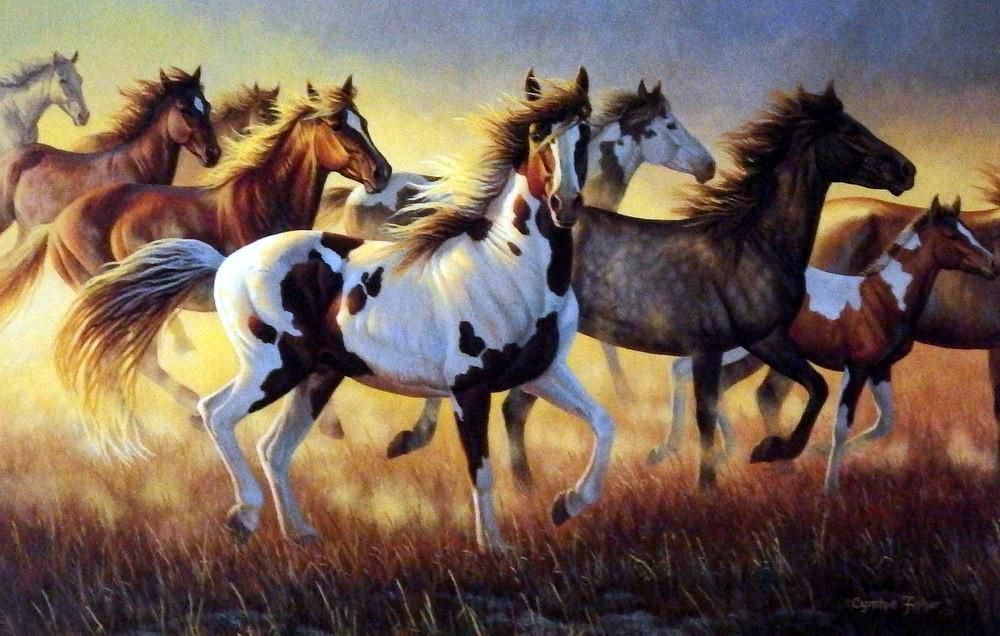Horse (wild)
| Species | hoofed mammal |
| No. Appearing | 5–30 |
| Behaviour | herd |
| Range | barrens, desert, steppe |
| Size | 14–17 hands at the withers |
| Weight | 800–1,100 lbs. |
| Intelligence | 3 |
| Armour Class | 7 |
| Hit Dice | 2 |
| Action Points | 6 |
| Max. Stride | {{{stride}}} |
| THAC0 | 20 |
| Hp/Die | d4+d6 |
| Attack Forms | bite |
| Damage | 1–3 |
| Special Attacks | back kick |
Wild Horses are horses that are more accurately called feral, as they are free-roaming horses of domesticated stock, rather than a wild animal in the true sense of the word. These have descended from domestic horses that strayed, escaped or were deliberately released into the wild, remaining to survive and reproduce there. Over time, these animals' behaviour came to resemble wildness.
Feral horses live in groups called a herd, usually made up of small harems led by a dominant mare, containing additional mares, their foals, and immature horses of both sexes. There is usually one herd stallion, though less dominant males may remain with the group. Horses have a well-developed fight-or-flight response. Their first reaction to a threat is often to flee, although sometimes they stand their ground and defend themselves or their offspring in cases where flight is untenable, such as when a foal is threatened.
There are several infamous populations of free-ranging feral horses, such as in Iberia, southern Russia, the Americas or Turkestan. These are carefully managed by druids, though some gleaning from the herds is permitted at during the late spring. Permission is usually asked, of forestals directly or of local nobility or chieftains. Other smaller, less protected herds occur in many places. Handled appropriately, horses may be "cut out" from a herd, lassoed so that they can't kick a trained horse-rider and readied for domestication.
Defenses
Wild horses will often wait for a threat to come quite near, so that at the proper moment they can turn and deliver a strong back kick. This consists of two attacks, at 1-8 damage each, followed by flight if practical or turning on the enemy while urging the foal vocally to run. Thereafter the horse will fight with its bite until it is taken down, sacrificing itself for its young.
See Bestiary
